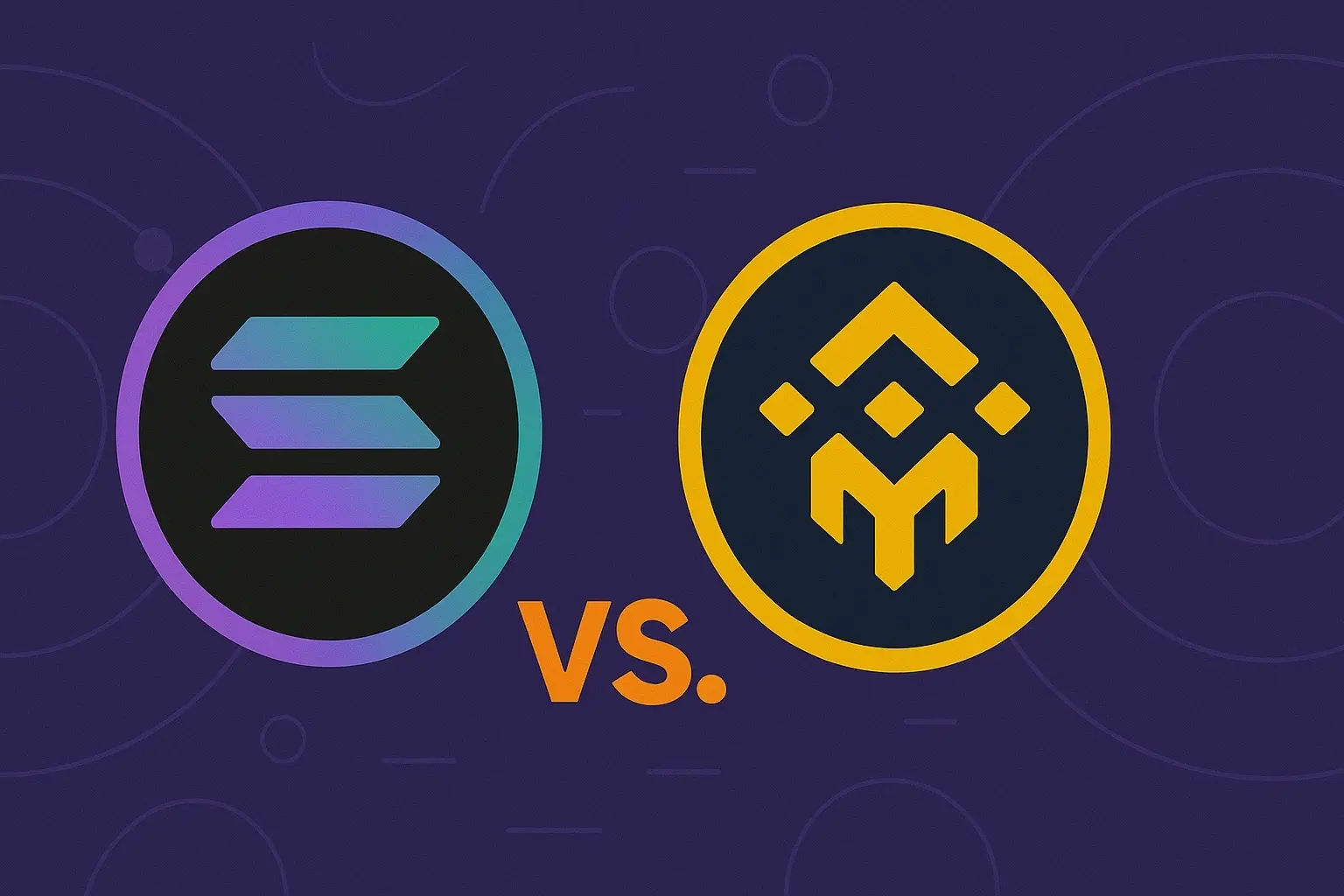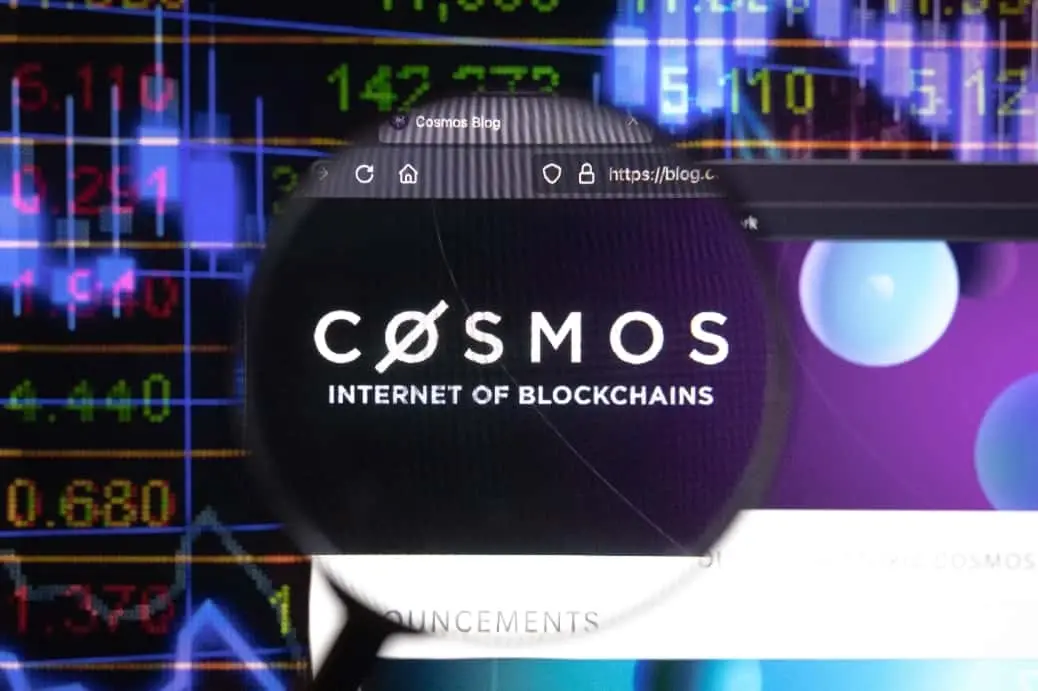Coin Bureau: A Detailed Explanation of COSMOS, Routes, Expectations, and Concerns
Source: Coin Bureau
Compiled by: 0xbread, TechFlow
People often say that the future of cryptocurrency is multi-chain. However, what we have seen so far are just a bunch of bridges between different blockchains, which take a lot of time and money to use. Cosmos is a cryptocurrency project aimed at creating a fast, affordable, user-friendly, and truly interoperable multi-chain future.
Today, I will briefly introduce Cosmos to give you a quick overview of some of the most important updates about the project.
What is Cosmos?
If you have never heard of Cosmos before, here are some key points you need to know. Cosmos was founded by Jae Kwon and Ethan Buchman in 2014.

Cosmos is built by the for-profit software company Tendermint Inc., based in the United States.
The development of Cosmos is coordinated by the non-profit organization Interchain Foundation, located in Switzerland. Cosmos raised $17 million through three token sales in 2017.
The Cosmos mainnet went live in March 2019 and has not experienced any security issues since its launch. This is because the Cosmos blockchain uses a new type of proof-of-stake consensus mechanism called Tendermint, which is very fast and very secure. However, it comes at the cost of centralization, as the Tendermint chain is limited to about 130 validators, while Cosmos itself has only 150 validators. ATOM is the native token of the Cosmos blockchain, used for staking, governance, and paying transaction fees.
The annual ATOM staking rewards for delegators and validators range from 14% to 15%; there is no minimum requirement, but there is a 21-day lock-up period. Validators must also stake enough ATOM to enter the top 150, and any misbehaving validators will see their stakes slashed.
As for governance, at least 512 ATOM tokens must be locked to submit a proposal. At least 40% of the staked ATOM must participate in the voting, with at least 50% of participating ATOM voting in favor and less than 33.4% of participating ATOM voting against.
Any ATOM that fails to meet the minimum amount within two weeks or is rejected in proposals during the voting period will be burned.
You can access Cosmos's staking and governance using the Keplr Wallet, which serves as a web wallet, browser extension wallet, and even has mobile applications for Android and iOS devices.

In addition to Cosmos, the Keplr wallet supports over 16 cryptocurrencies, whose blockchains are built using the Cosmos SDK, a development tool created by Tendermint Inc. that allows you to easily build fast and secure cryptocurrencies from scratch.
More than 50 cryptocurrencies have been built using the Cosmos SDK, including Binance Coin (BNB), Terra (LUNA), crypto.com coin (CRO), and Thorchain (RUNE).

Since all these cryptocurrencies use the same consensus mechanism, they can interoperate seamlessly, meaning you can transfer tokens in seconds for just a few cents. This is because Cosmos's Inter-Blockchain Communication protocol, or IBC, serves as an interoperability standard that is compatible not only with Cosmos-based blockchains but also with any proof-of-stake cryptocurrency with fast finality, such as Solana and Polkadot.
Updates and Iterations of Cosmos
It has been a few months since I last reported on Cosmos, and a lot has happened since then. In mid-October, Cosmos announced a partnership with a blockchain gaming company called Forte. This will see the integration of the Cosmos ATOM token into the Forte wallet and open the door for anyone wanting to run Cosmos-based blockchains for NFTs.

Cosmos also announced a new cryptocurrency called Sagan, which will serve as a real-time testnet for the upcoming Cosmos upgrade, similar to Kusama for Polkadot.
At the end of October, Terra integrated IBC, bringing its decentralized stablecoin UST to other blockchains through IBC integration.
A Malaysian bank also announced a partnership with a Cosmos project called Irisnet, which will utilize Cosmos technology as part of its business.

Another significant announcement in October was that Osmosis raised $2100 million. Osmosis is the largest DEX in the Cosmos ecosystem, currently locking in a total value of over $1.2 billion.
At the beginning of November, Forte announced a massive funding round of $725 million, with investors including Andreessen Horowitz, Animoca Brands, and even Warner Music Group.
Cosmos also began the Vega upgrade, which was completed in December. Vega introduced new features to Cosmos, such as transaction fee delegation and some performance optimizations.
In mid-November, a Cosmos project called Persistence raised $10 million from various crypto VCs, including Three Arrows Capital, Galaxy Digital, Coinbase Ventures, Kraken Ventures, and Alameda Research, which is closely associated with the FTX exchange.
In mid-December, Cosmos announced the completion of the highly anticipated Gravity Bridge, which will enable seamless interoperability between Cosmos's blockchain and Ethereum. Note that the Gravity Bridge has not yet connected to any Cosmos chain. However, it looks like the first one will be Osmosis.

A Cosmos project called Sentinel also launched its latest decentralized VPN mobile application, allowing users to earn cryptocurrency by sharing bandwidth or paying for decentralized VPN services using fiat currency or Sentinel's native DVPN coin.
At the end of December, Cosmos announced the winners of its million-dollar hackathon, with three projects worth noting.
The first is Evmos.me, which allows the use of Metamask and Keplr with Evmos, an upcoming Cosmos project that utilizes the Ethereum Virtual Machine to deploy smart contracts.

The second is a swapping feature called Cosmos Omnibus, which allows validators on Cosmos-based blockchains to deploy their nodes on the decentralized storage Cosmos project Akash Network.

The third is a decentralized application called Nymdrive, which is essentially a decentralized cloud storage platform built on NYM, similar to Google Drive or Dropbox. Regarding this, Coinlist recently announced the NYM token sale, which is quite a notable token given that Coinlist only offers token sales for high-quality crypto projects.

Another Cosmos project called Umee also raised $32 million from over 63,000 investors at the end of December, and Umee is set to become a DeFi project similar to AAVE.
Price Analysis of ATOM
All the announcements, upgrades, and developments from Cosmos are bullish for ATOM. However, since I last reported on the project in September, it has only risen about 50%.

Aside from the general weakness we have seen in the cryptocurrency market since last December, ATOM has attempted and failed to break the $45 mark three times in the past few months. This means that if the price approaches these levels again, it may encounter a lot of resistance.
What is keeping ATOM down is not just the cryptocurrency market or technical factors. For newcomers, ATOM is highly inflationary. Its annual inflation rate ranges from 7% to 20%, depending on the percentage of ATOM staked in the network.
This high inflation is intentional, aimed at curbing speculation and incentivizing active participation in staking, whether through using ATOM for staking or participating in other Cosmos blockchains.
The target staking percentage for Cosmos is 67%, but as you can see, only about 63% of ATOM is staked. According to the ATOMScan explorer, the slight deviation from the ideal staking percentage corresponds to an annual inflation rate of over 9% for ATOM.

Strangely, since August, the circulating supply of ATOM has actually increased by about 25%, indicating that more ATOM has come from elsewhere.
I suspect that this additional ATOM comes from Tendermint Inc. and Interchain Foundation, whose ATOM allocations were completed last spring. This means they can technically spend their ATOM, and if the million-dollar hackathon is any indication, they are ready to go all out to expand the Cosmos ecosystem.
Assuming that an additional 66 million ATOM enters circulation at an average price of $25, this amounts to a sell pressure of up to $1.65 billion, although I believe most of this ATOM is staked rather than sold.
Since the launch of IBC last year, demand for ATOM has been quite significant, and to my knowledge, most of the demand comes from the previously mentioned Osmosis DEX. This is mainly because you cannot access Osmosis without ATOM, as the OSMO coin itself is not available on any centralized exchange, meaning that if you want to access emerging Cosmos projects, you must buy ATOM and transfer it to Osmosis.

Interestingly, some exchanges have proposed to list the OSMO coin. However, Osmosis founder Sunny Agarwal told them that if your users want OSMO, they should go to the Osmosis DEX.
Additionally, some Cosmos projects that had initial DEX offerings on Osmosis only accept ATOM as investment, and some Cosmos projects also airdrop their tokens to ATOM stakers or liquidity providers.
Roadmap Part 1
As for the price potential of ATOM, it is hard to say. Cosmos itself is a large-cap cryptocurrency, which means it will be difficult for ATOM to rise more than 3 or 4 times before the end of the bull market.
As always, this ultimately depends on the Cosmos roadmap. This was released last July and includes seven upgrades. There are five upgrades remaining, each with different milestones.
The first is the Theta upgrade, expected to occur by the end of this quarter. The Theta upgrade will allow liquidity to be modified through governance, meaning that token pairs in Cosmos's Gravity DEX will be able to execute trades on other blockchains connected to IBC.

For example, you can sign transactions in the Osmosis wallet from your Cosmos wallet, allowing you to sign transactions without switching chains in wallets like Keplr.
More importantly, the Theta upgrade will enable you to allow other users or applications to sign transactions in any of your wallets on other chains, opening the door for interoperable and decentralized applications.
The second upcoming upgrade for Cosmos is called Row, expected to be completed by the end of the second quarter of this year, which is around the end of June. This upgrade will enable Cosmos's governance module to interact with dApps and IBC-enabled blockchains. It will introduce NFTs to the Cosmos blockchain and also bring in liquid staking. Without excessive blockchain technology, liquid staking will allow staked ATOM to be used in decentralized applications.
Row will also introduce the option to redirect part of ATOM inflation to community treasuries, another IBC-enabled blockchain, or even directly to decentralized applications to provide liquidity. This sounds very similar to Tezos's own liquidity banking.
Roadmap Part 2
The third upcoming upgrade for Cosmos is called Lambda, expected to be completed by the end of the third quarter, which is around the end of September. Lambda will be huge because it includes three important things.
The first important thing in Lambda is called exchange security, which will allow Cosmos validators to secure other Cosmos-based blockchains. This is important because one of the biggest barriers to entering new Cosmos projects is the lack of sufficient funds to secure their blockchains.
This is because the security of proof-of-stake blockchains essentially comes from the total value of the staked coins. That is why even large Cosmos projects like Osmosis plan to leverage their exchange security when Cosmos emerges. The total value locked on the Osmosis DEX is actually greater than the value staked to obtain those funds.
The second important thing in Lambda is that it will allow Gravity Bridge and Gravity DEX to exist on their own blockchains. This is important because it will alleviate the pressure on the Cosmos blockchain and minimize the risk of congestion.
The third important thing in Lambda is the introduction of chain name services, which I believe is a form of decentralized digital identity. This is important because it can create a stronger governance structure within the Cosmos ecosystem and open the door for decentralized credit scoring and similar concepts, allowing you to borrow more from DeFi protocols.
The fourth and fifth upgrades for Cosmos are called Epsilon and Gamma, expected to occur by the end of this year and in the first quarter of 2023, respectively. The goals to be achieved in these upgrades are not very detailed at the moment, and I believe they will change as the time approaches, so stay tuned for that.

Other Cosmos milestones are recorded at the bottom of the roadmap, including privacy, smart contracts, and aggregation. Unfortunately, no dates or further details have been provided for these milestones.

Other Cosmos milestones outside the roadmap include the launch of Sagan, the real-time testnet I mentioned earlier, the Alpha version of Emeris, which is the front end of Gravity DEX, and the Emeris Web wallet, which will be a "cross-chain portfolio."

In simple terms, the Emeris web wallet will be able to interact with multiple cryptocurrency blockchains simultaneously, not just Cosmos-based blockchains.

Speaking of this, Peng Zhang, the CEO of Tendermint Inc., also hopes that Ethereum will be able to enable IBC once it transitions to PoS, as this is currently not possible due to the slower finality of proof-of-work transactions.
Concerns about COSMOS
Regarding my concerns about Cosmos, I want to start by saying that Cosmos is one of my favorite cryptocurrency projects, and I hold ATOM as part of my cryptocurrency portfolio.
Even so, certain aspects of the project still need significant improvements, primarily in development.
Many of the goals on the Cosmos roadmap that I just mentioned should have been completed last year. While I tend to say this may just be due to a shortage of developers, a recent report on cryptocurrency developers found that the Cosmos ecosystem has over 1,000 developers, making it the third-largest project by developers after Ethereum and Polkadot.
The only issue is that this number seems to apply to the entire Cosmos ecosystem rather than just the Cosmos blockchain itself. In other words, many Cosmos developers may be working on other crypto projects, such as Osmosis, which has garnered a lot of attention and liquidity within the Cosmos ecosystem.
This ties into my second concern, which is competition specifically from within the Cosmos ecosystem itself. As Osmosis founder Sunny Agarwal acknowledged in an interview.
Without the Cosmos blockchain, the Cosmos ecosystem could continue to exist, as other Cosmos blockchains do not need Cosmos to operate, and ATOM does not need to pay transaction fees for these blockchains.
This is my biggest concern about Cosmos: the value capture of ATOM. Basic economics dictates that for prices to rise, demand must exceed any new supply, and ATOM seems to struggle to maintain this dynamic.
Currently, the primary use of ATOM is as the key required to open the gates of the Cosmos kingdom. But this role could easily be filled by another Cosmos token supported by exchanges. This means that Cosmos developers need to create more demand drivers for ATOM.
Alternatively, the Cosmos community could adjust the tokenomics of ATOM to minimize sources of new supply, which is a hot topic on the Cosmos governance forum.
Regarding its value, I believe Cosmos will find a way to add value to ATOM both within and outside its ecosystem. From my perspective, it seems to be focused on the Vega upgrade. I truly believe that as long as we do not enter another crypto winter, 2022 will be an important year for Cosmos.









